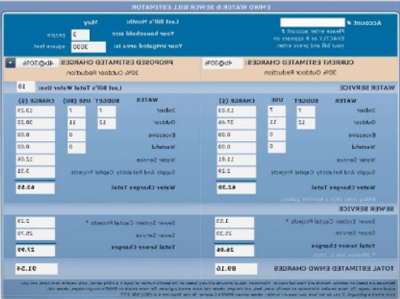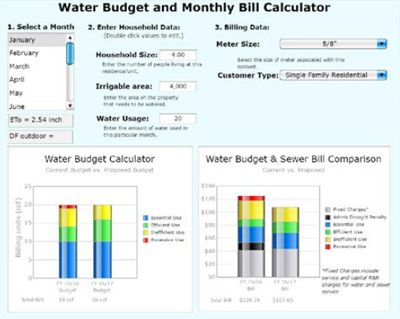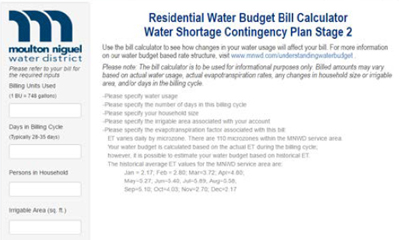|
|
|
Coachella Valley
Water District |
For three months before BBRs were implemented, CVWD put information and warnings on water bills to lessen the amount of confusion after implementation. |
 |
Elsinore Valley Municipal
Water District |
EVMWD started early with notices in quarterly newsletters, bill inserts, and handouts. For 6 months around implementation, monthly notices were sent out and extra customer service staff was hired. EVMWD opted against shadow bills, but had a bill calculator with rate comparison online. |
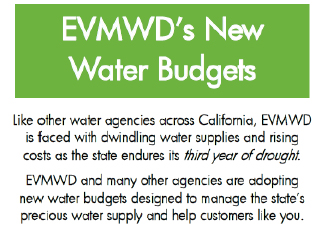 |
| Irvine Ranch Water District |
IRWD discussed best practices and
suggestions for customer outreach, including test bills, site visits, dedicated communication hotline and/or email, and online resources. IRWD delayed BBR implementation (i.e., kept on uniform rates) for customers who couldn’t be reached, were actively working with staff to reduce high water use, or would have an extremely expensive BBR bill. IRWD also discussed internal training of staff. |
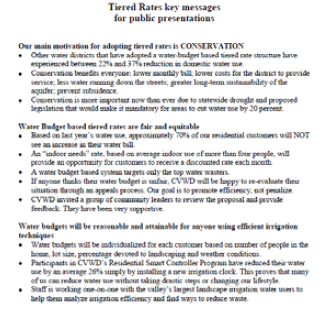 |
Las Virgenes Municipal
Water District |
LVMWD sent a questionnaire to all single family residential customers 6 months before BBR implementation to ensure data was accurate and to get a head start on variance requests. The questionnaire asked about the number of residents, the irrigated area, and if additional water was needed for livestock or medical reasons. LVMWD provided a stamped envelope and allowed responses by mail, fax, email, phone, and in person. |
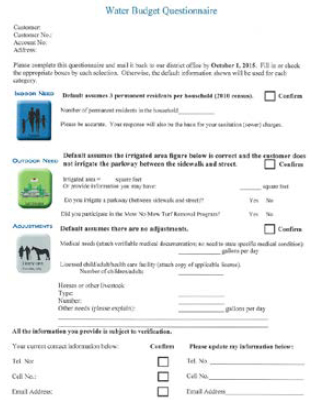 |
Moulton Niguel
Water District |
MNWD focused outreach on groups and governing bodies that could also influence and educate the public. MNWD leadership attended city council meetings and gave presentations and answered questions. Staff provided education and shadow bills to the Citizen Advisory Committee to enlist their support. |
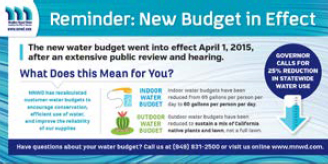 |
Rancho California
Water District |
RCWD has a web-based application where customers can track their usage relative to their budget and also view projected water use. The application can notify customers via text if they reach a certain%age of their water budget. |
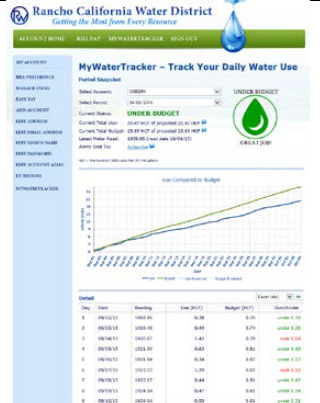 |
| Valencia Water Company |
VWC underwent meter impact studies of residential and dedicated irrigation customers during BBR implementation that involved data collection and analysis. From the monthly analysis, VWC sent High Consumption Letters to customers who greatly exceeded their budgets |
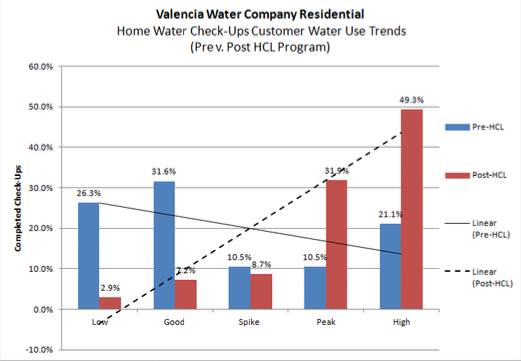 |
Western Municipal
Water District |
WMWD held public workshops, sent out mailers, provided budget and variance estimates and examples, and conducted employee training. Temporary staff was also hired and contacts were provided for customer service, water use efficiency specialists, and a contacted vendor who could provide a free landscape evaluation. |
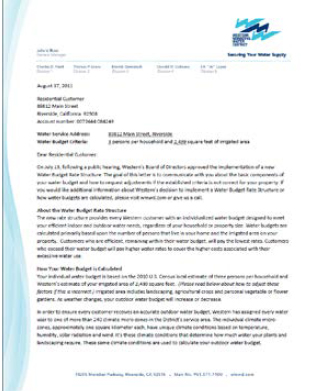 |
